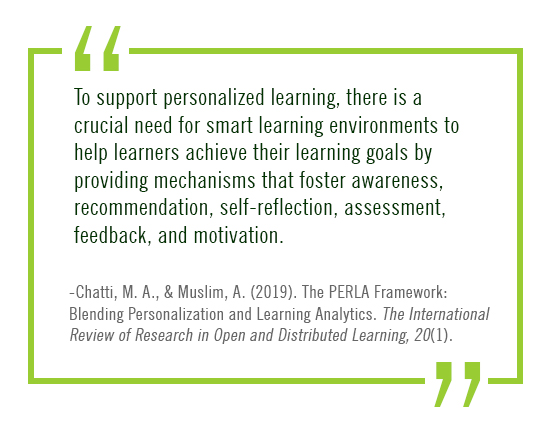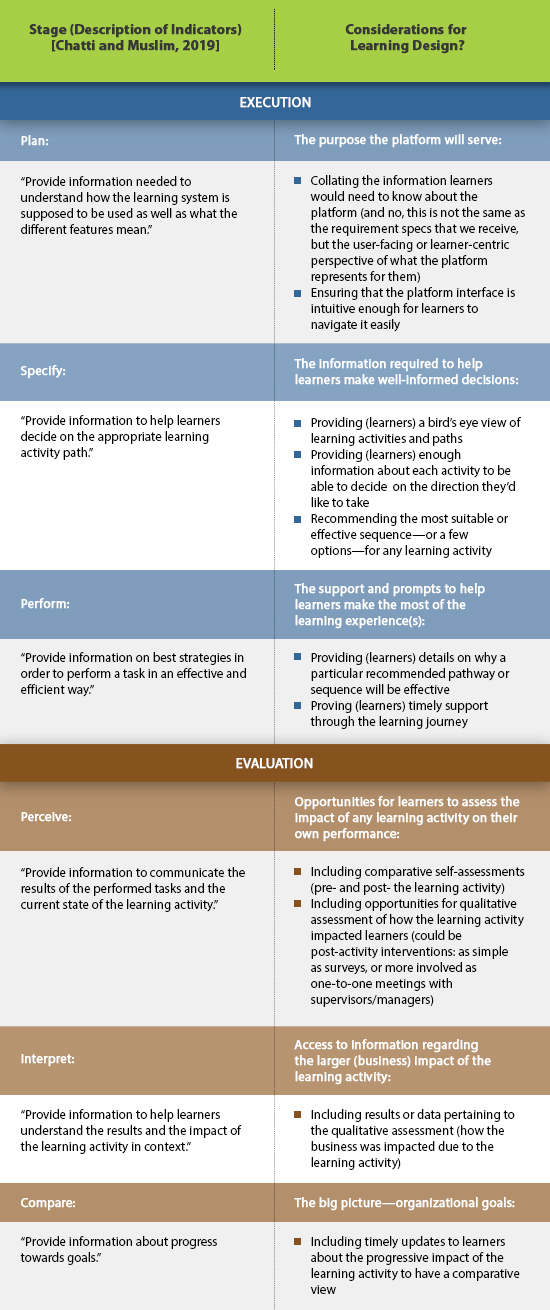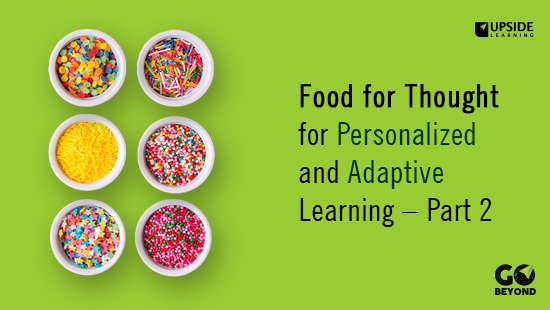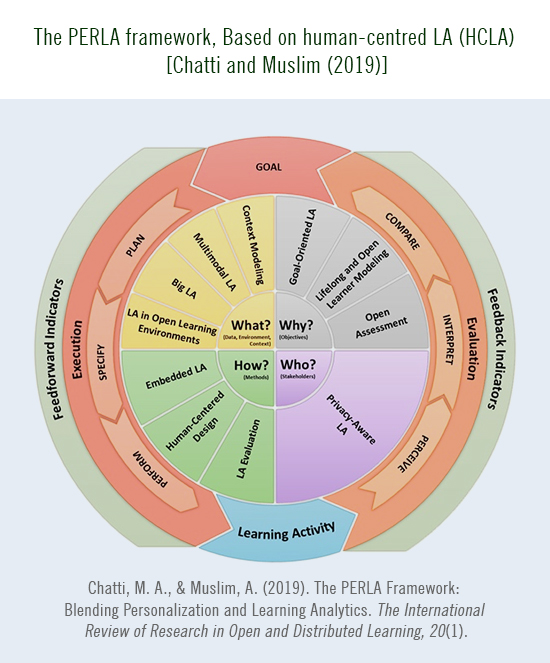As the L&D industry works towards personalized learning design, we are all set on a focused approach to use data and analytics to drive the design and development of initiatives.
In this regard, a 2019 research paper discusses the Personalization and Learning Analytics Framework—or PERLA—to represent the integration of Personalization and Learning Analytics. The paper positions PERLA as a theoretical base towards a systems approach to designing and developing effective indicators for personalized learning backed by analytics. The aim of the proposed framework is to highlight the use of Learning Analytics (LA) to promote personalization (towards creating ‘smart learning environments’).

Breaking down the personalized learning activity
The authors also model the personalized learning activity as a 7-stage cyclical process. Drawing from this cycle, the main aspects of a personalized learning experience up for consideration are execution and evaluation—both comprising three stages each.
Each of the seven stages of the model can be thought of as trigger points to raise pertinent questions towards the design of effective indicators for personalized learning. I found the description for the indicators suggested by the authors very intuitive in terms of insights that I think learning designers could consider.
So what’s in it for learning designers?
I mapped the indicators for personalized learning from the research and tried to translate them to usable insights when approaching learning design.
Here is the result of the mapping activity that presents certain insights to develop the right approach towards solving a business problem in a ‘real’ or human-focused way.
For each indicator, consider all the aspects learning designers need to factor in when designing a platform to enable content consumption
(I have made a deliberate attempt not to say ‘LMS’ or ‘LXP’ here, because I think irrespective of the technological output, these design considerations can be common to both).

What this means for L&D practitioners is that with the right thinking tools (questions and indicators suggested in the paper), and mapping them to the proposed learning experience, intervention or platform, there’s a systems-focused way to approach any business problem and design a suitable solution for it through personalized and adaptive delivery.
So overall…
The PERLA paper, as many other research initiatives and industry opinions I’m sure, opens up the idea of personalization as the go-to rather than a good-to-have approach. With industry-wide disruption placing data and learning analytics in the spotlight, personalization continues to remain a hot topic, until it becomes the norm.
Until it does (since data and analytics would have many dependencies), learning designers can make use of ideas to personalize the experience at three levels—(yes, the triad again!)—the Learners, the Content, and the Environment (or ‘Smart’ Environment, as the authors of the PERLA paper rightly state).
More on this after some more digging around on what’s trending with personalized learning experiences!




















